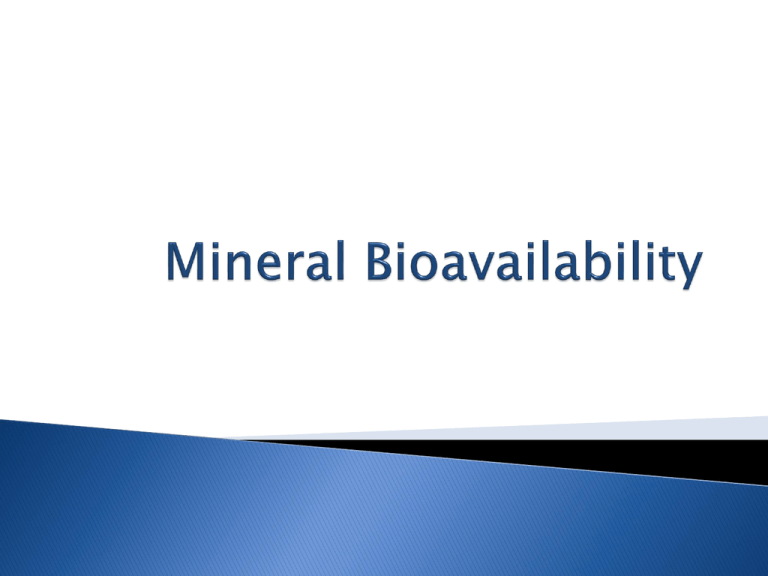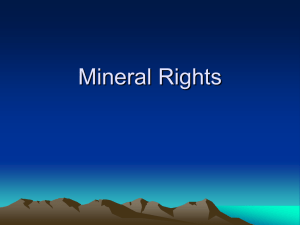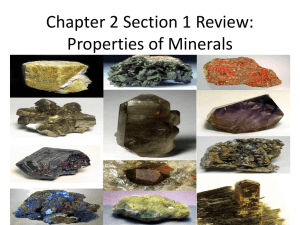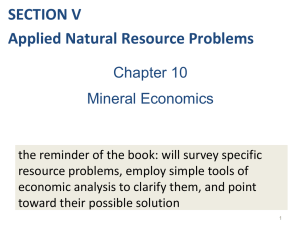
The proportion of the element consumed that is
utilized for a biochemical or physiologic function
(O’Dell, 1997)
A measure of the proportion of the total amount of
a nutrient that is utilized for normal body functions
(Fairweather-Tart, 1999)
The degree to which an ingested nutrient in a
particular source is absorbed in a form that can be
utilized in metabolism by the animal (Ammerman
et al., 1995)
The fraction of the ingested nutrient that is utilized
for normal physiological functions or storage
(Jackson, 1997)
Intestinal absorption (major barrier)
Transport to site of action
Cellular uptake
Incorporation into a biochemically active form
Incorporation into biological
processes
Small Intestine
Fe
Cu
Transferrin
Transport Proteins
Chaperone Proteins
Extracellular
Heme
Intracellular
Superoxide Dismutase
Intrinsic or Physiological Factors that Influence
Bioavailability
1) Species and Genetics
2) Age and Sex
3) Metabolic Function – growth, lactation, maintenance
4) Nutritional Status
5) Intestinal or Rumen Microflora
6) Physiological Stress
Extrinsic or Dietary Factors that Influence Bioavailability
1)
2)
3)
4)
5)
Solubility of element – CuS, CuMoS4
Binding to other dietary components (fiber, silica) in the intestine
State of Oxidation – Fe+2 vs. Fe+3
Competitive Antagonisms of similar ions
Chelation effects – Can be positive or negative depending on the
solubility and dissociation constant of the complex formed.
Tissue Utilization
Absorbed Cu
Cu Transporters
Biliary Cu
Dietary Cu
Unabsorbed &
Endogenous
Cu
Total Fecal Cu
Intestinal absorption changes in a situation of
excessive mineral consumption verses normal
Normal mineral consumption
Excessive mineral consumption
High Dietary Zn, Fe
Passive Diffusion
Paracellular
Zn & Fe
Zn & Fe
Absorption
Supplemental Zn (mg/kg)
Gain, g/d
Serum Zn, mg/L
Serum alkaline phosphatase, U/L
0a
5
40
70b
140c
150c
0.18b
45b
0.59c
137c
1.00d
175c
aBasal
diet analyzed 3.7 mg Zn/kg.
b,c,dP < 0.05.
Droke and Spears, 1993
Species
Criterion
Pigs
Growth, Bone and Plasma Zn,
Plasma Alkaline Phosphatase
Chicks
Growth, Bone Zn
Ruminants
Growth, Plasma Zn, Plasma Alkaline
Phosphatase
Adequate
Deficient
127.8
61.5
Ceruloplasmin, mg/dL
33.6
6.6
Plasma copper, mg/L
1.3
0.4
178.1
4.6
Plasma diamine oxidase, U/L
Liver copper, mg/kg
Legleiter and Spears, 2007
Species
Criterion
Nonruminants
Bile Cu? Plasma Diamine Oxidase?
Ruminants
Plasma and liver Cu, Plasma
Ceruloplasmin
Plasma Diamine Oxidase
Mineral composition of feedstuffs
Feedstuff
Ca
P
Na
K
Mg
Mn
Fe
Cu
Zn
Se
Fescue hay
0.41
0.30
0.02
1.96
0.16
97.00
132.00
22.00
35.00
Alfalfa hay
1.40
0.28
0.05
2.43
0.28
30.30
198.00
7.30
18.80
0.41
Corn silage
0.25
0.22
0.01
1.14
0.18
23.50
131.00
4.18
17.70
0.53
Soybean meal
0.25
0.60
0.04
1.97
0.27
27.50
120.00
28.00
60.00
0.1
Corn gluten feed 0.07
0.95
0.26
1.40
0.40
22.10
226.00
6.98
73.30
1.8
Soybean hulls
0.53
0.18
0.03
129.00
0.22
10.00
409.00
17.80
48.00
0.14
Corn
0.30
0.32
0.01
0.44
0.12
7.89
54.50
2.51
24.20
0.6
Barley
0.05
0.35
0.01
0.57
0.12
18.30
59.50
5.30
13.00
1.16
Hale and Olson, MU Epub
Minerals
Forms in Plants
Zinc
Anionic complexes; fiber associated; phytate
complexes
Neutral or anionic complexes; fiber associated;
phytate
Selenomethionine; selenite; selenate
Copper
Selenium
Iron
Ferritin; porphyrins; anionic complexes; ferric
hydroxide
Manganese
Largely unknown
Iodine
Iodide ion
Molybdenum
Molybdate ion
Mineral
Supplement
Empirical formula
Calcium
Calcium carbonate
Bone meal
Calcium chloride
(dihydrate)
Dicalcium phosphate
Limestone
Monocalcium
phosphate
Cobaltous sulfate
Cobaltic oxide
Cobaltous carbonate
Cobaltous oxide
Cupric sulfate
Copper EDTA
Copper lysine
Cupric chloride
(tribasic)
Cupric oxide
Cupric sulfide
Cuprous acetate
Potassium iodide
Sodium iodide
Calcium iodate
Diiodosalicyclic acid
Ethylenediamine
dihydriodine
Pentacalcium
orthoperiodate
Ferrous sulfate
heptahydrate
Ferric citrate
Ferric EDTA
Ferric phytate
Ferrous carbonate
CaCO3
variable
CaCl2(H2O)
Cobalt
Copper
Iodine
Iron
Ca2(PO4)
Mineral concentration (percent) Relative bioavailability (RV) Mineral availability
(percent of content)
38
100.00
38.00
24
110.00
26.40
31
125.00
38.75
Ca(PO4)
20
36
17
110.00
90.00
130.00
22.00
32.40
22.10
CoSO4(H2O)7
Co3O4
CoCO3
CoO
CuSO4(H2O)5
variable
variable
Cu2(OH)3 Cl
21
73
47
70
25
variable
variable
58
100.00
20.00
110.00
55.00
100.00
95.00
100.00
115.00
21.00
14.60
51.70
38.50
25.00
variable
variable
66.70
CuO
CuS
CuC2O2H3
KI
NaI
Ca(IO)3
C7H4I2O3
C2H8N2(HI)2
75
66
51
69
84
64
65
80
15.00
25.00
100.00
100.00
100.00
95.00
15.00
105.00
11.25
16.50
51.00
69.00
84.00
60.80
9.75
84.00
Ca5(IO6)2
39
100.00
39.00
FeSO4(H2O)7
20
100.00
20.00
variable
variable
variable
FeCO3
variable
variable
variable
38
110.00
95.00
45.00
10.00
variable
variable
variable
3.80
Supplement
Cupric sulfate
Copper EDTA
Copper lysine
Cupric chloride (tribasic)
Cupric oxide
Cupric sulfide
Cuprous acetate
Empirical formula Mineral concentration
(percent)
CuSO4(H2O) 25
5
variable
variable
Cu2(OH)3 Cl
CuO
CuS
CuC2O2H3
variable
variable
58
75
66
51
Relative
bioavailability
(RV)
Mineral
availability
(percent of
content)
100.00
25.00
95.00
100.00
115.00
15.00
25.00
100.00
variable
variable
66.70
11.25
16.50
51.00
Cu sulfate
Cu glycinate
Log Liver Cu, mg/kg
499/332 = 150% RVB
Linear (Cu sulfate)
Linear (Cu glycinate)
2.5
2
P < 0.01
1.5
1
0.5
0
0
50
100
Daily Individual Cu Intake, mg/d
150
Mineral
Supplement
Magnesium
Magnesium
MgSO4
sulfate
Magnesium
MgC2O2H4
acetate
Magnesium
MgCO3
basic carbonate
Magnesium
MgO
oxide
Manganese
MnSO4(H2O)
sulfate
Manganese
MnCO3
carbonate
Manganese
MnO2
dioxide
Manganese
variable
methionine
Manganese
MnO
monoxide
Sodium
NaPO4
phosphate
Bone meal
variable
Defluorinated
variable
phosphate
Dicalcium
CaHPO4
phosphate
Sodium selenite Na2SeO3
Cobalt selenite variable
Selenomethionin variable
e
Selenoyeast
variable
Sodium chloride NaCl
Sodium
Na(CO3)2
bicarbonate
Zinc sulfate
ZnSO4(H2O)
Zinc carbonate ZnCO3
Zinc oxide
ZnO
Manganese
Phosphorus
Selenium
Sodium
Zinc
Empirical
formula
Mineral
concentration
(percent)
20
Relative
bioavailability (RV)
Mineral availability (percent
of content)
100.00
20.00
29
110.00
31.90
31
100.00
31.00
55
100.00
55.00
30
100.00
30.00
46
30.00
13.80
63
35.00
22.05
variable
125.00
variable
60
60.00
36.00
21
12
100.00
80.00
21.00
9.60
18
85.00
15.30
45
variable
variable
100.00
105.00
245.00
45.00
0.00
0.00
variable
40
27
290.00
100.00
95.00
0.00
40.00
25.65
36
56
72
100.00
60.00
100.00
36.00
33.60
72.00
variable
Minerals must be soluble at site of absorption
Information on trace mineral bioavailability
from feeds is based on GIT solubility
Copper
0a
Zinc
72 h
0a
72 h
------------ % of total ------------Alfalfa
88.9
92.9
25.8
79.4
Rhizoma peanut
50.6
89.6
18.1
80.5
Dwarf elephantgrass
84.4
94.3
7.3
75.5
Bermudagrass
69.9
75.8
43.1
62.1
Bahiagrass
63.1
81.7
33.8
53.0
Limpograss
70.0
69.5
26.6
67.2
aAmount
disappearing following washing with water.
Emanuele and Staples, 1990
Availability of minerals in feedstuffs
◦
◦
Chemical forms
Fiber
Dietary antagonisms
◦
Effect on feedstuff mineral vs. supplemented mineral
Increasing absorption and/or reducing
excretion if intake of a mineral is low
or marginal relative to the
requirement
Reducing absorption and/or
increasing excretion if intake of a
mineral is above the requirement
Dietary zinc (mg/kg)
Net 65Zn absorptionb
Milk zinc
65Znb
mg Zn/d
Net 65Zn retentionb
aCows
were fed diets for 6 weeks.
followed for 14 days.
b% of 65Zn dose.
c,d (P < 0.01).
65Zn
39.5
16.6
34.8c
53.4d
6.3c
14.4d
60
52
28.5c
39.0d
was given orally on week 5 and
Neathery et al., 1973
Dietary zinc (mg/kg)
Tissue
39.5
16.6
---------- mg/kg DM ---------119
109
Liver
Heart
Lung
Ovaries
80
81
74
75
88
71
Muscle
Rib, cartilage
102
54a
109
44b
a,b(P
< 0.01)
Neathery et al., 1973
Selenite-selenium
absorption in
ruminants is much lower than in
nonruminants
Selenomethionine is the predominant
form of selenium that occurs naturally in
feedstuffs
Treatment
Control
Selenite
Selenomethionine
RBV
Plasma glutathione peroxidase, U/mg protein
Day 0
1.95
1.81
1.87
Day 28
2.38
5.03
6.05
138
Day 56
3.34
6.67
7.16
115
aControl
diet analyzed 0.04 ppm of Se. Selenium was
supplemented at 0.05 ppm from d 0 to 28 and 0.10 ppm from
d 29 to 56.
Treatment
Control
Selenite
Selenomethionine
RBV
Glutathione peroxidasea
Heart
280
494
509
107
Kidney
119
304
304
100
Liver
15
59
86
161
Muscle
22
37
50
186
Heart
0.50
0.86
1.00
139
Kidney
3.41
6.47
5.23
59
Liver
0.35
0.80
1.28
206
Muscle
0.12
0.26
0.31
133
Tissue seleniumb
aU/mg
protein.
bµg/g dry tissue.
Research regarding ruminant bioavailability of
minerals from feeds is extremely limited
A portion of certain trace minerals in forages appears
to be associated with the fiber fraction
Based on in situ studies, a high proportion of trace
minerals are released from forages in the rumen
Mineral sources differ in bioavailability which may
impact supplementation needs









